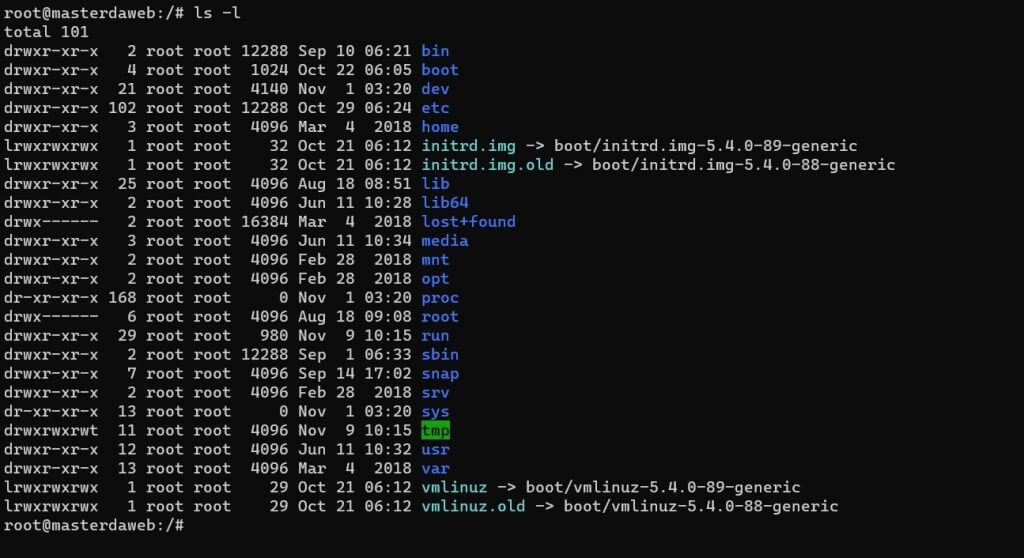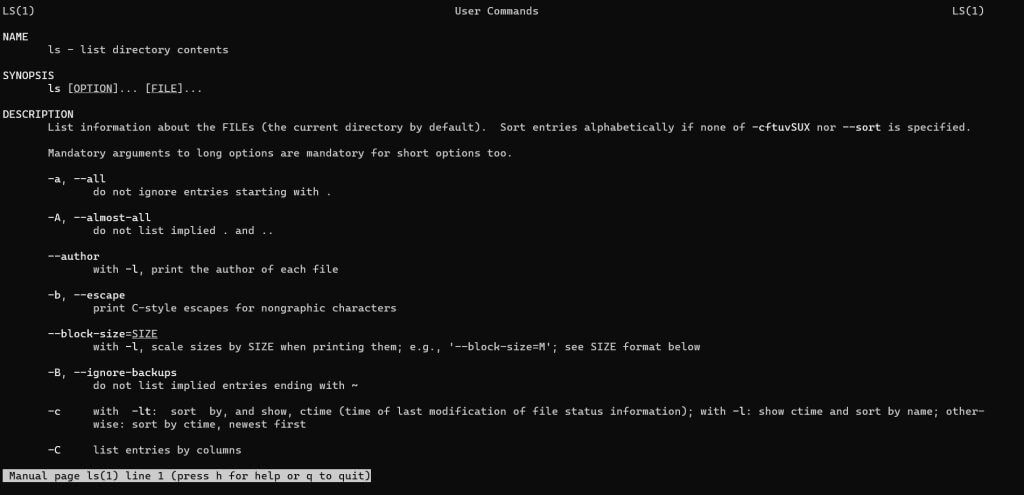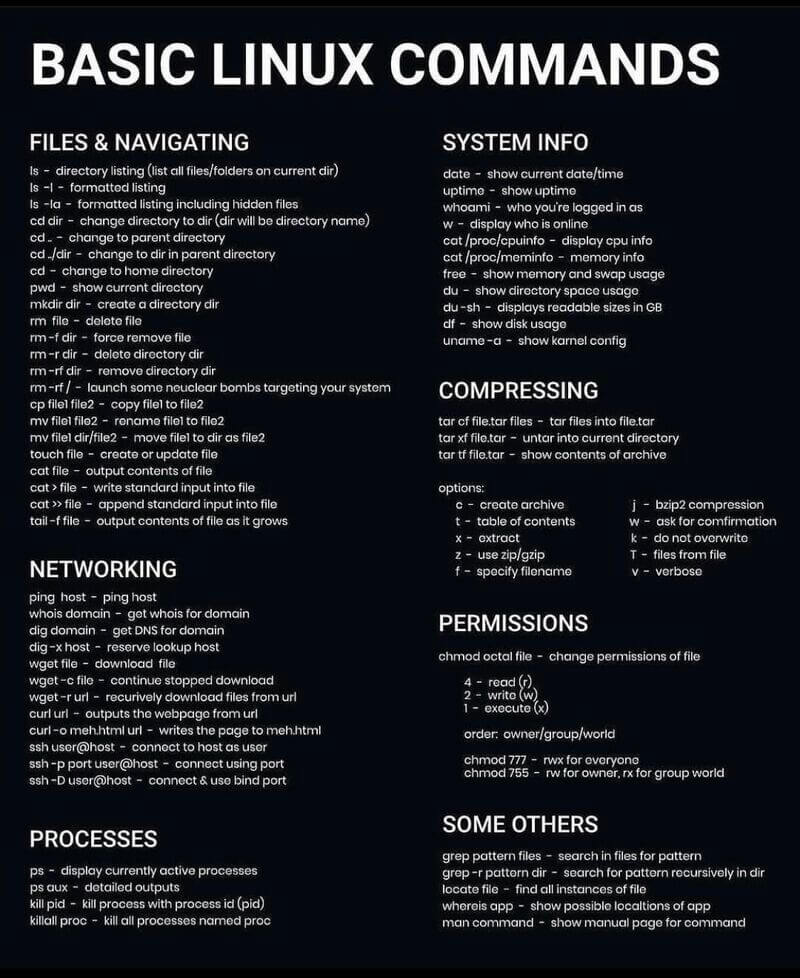Basic Linux commands, and the command terminal.

Today I want to talk a bit about Linux, the command terminal and the
own commands, many people think that Linux is something from another
planet, only advanced users can use, which is very difficult and
other myths out there, but it’s actually simpler than
Linux servers usually don’t have a graphical interface,
only have the command terminal, which is the famous “black screen”.
Today I’m going to explain a bit about the terminal and show you some commands
basic.
Let’s first talk about the command terminal, “screen
black”, found when logging into the system, to log into the system
Linux, we use the SSH protocol, for those who don’t know how to do remote access
on Linux, or don’t know what SSH is, I wrote a post about it, follow the
link.
https://blog.masterdaweb.com/linux-2/realizar-conexao-via-ssh-em-servidores-linux/
After logging into the system, the screen in the figure below is displayed, let’s go
she explained a little.

The line above shows us the following, root@masterdaweb:~# this line
already gives us a lot of information, “root” is the user logged into the system,
root is the administrator user of the Linux system, similar to the
Windows administrator, the “masterdaweb” is the name of the server, its
hostname, so “root@masterdaweb” means I’m logged in with
the root user on the server called web master, the part of the line that
contains the symbols “:~#” shows that I am in the home directory (Folder)
of the root user, whenever the “~” appears it will indicate that you are in the
home directory of the logged in user, and the “#” informs me that I have privileges
If you were an ordinary user, you wouldn’t see the “#”, would you?
Yes, the “$” symbol indicates that you do not have administrative privileges.
After having detailed what the information on the line shown means
in the terminal, here are some basic commands.
Commands:
cd – change directory (Change directory or folder)
Example: cd /home (Note: / is the root directory of the system,
similar to Windows’ C:, so you can make the command cd / to
go to the root directory of the system) the example command takes you inside
from the home folder located in the /
ls – directory listing Running this command will show all the files and directories that the current directory has. Commands have variations that we call options, these options can be used right after the command to change the result of the command’s output, the syntax is as follows [comando] [opções]The ls command with an option looks like this ls -l where -l is the option and means list in long form, in more detail, see the difference in the output of the ls command with and without an option in the prints below.


One way to find out what options a particular command has is to consult the command’s manual. The manual contains all the information about the commands, you will find a description of the command, its syntax, the options it has and a reference to similar commands. To consult the command’s manual, simply type the following command into the terminal man ls this command takes you to the ls command manual, see the print below.

With the command manual you have all the information you need to use the command in a single source of information. By consulting the manuals you will be able to use and understand any Linux command.
Finally, the command I want to mention is the clear command, which is used to clear the terminal screen when it is full of information. I’ll give you a list of all the basic Linux commands below. I believe that by explaining the terminal line and consulting the command manual, you’ll be able to use any command on the list below, so you can practice each one and learn more about each command by consulting the manual.

I hope this post helps you learn a little more about Linux.